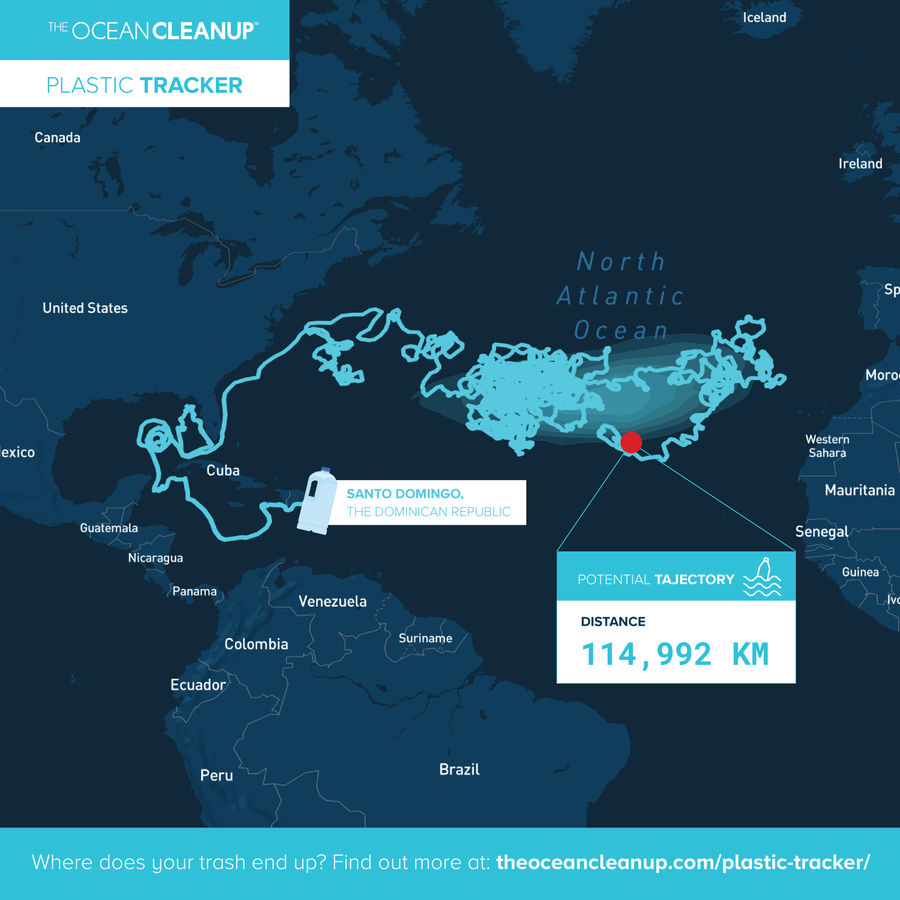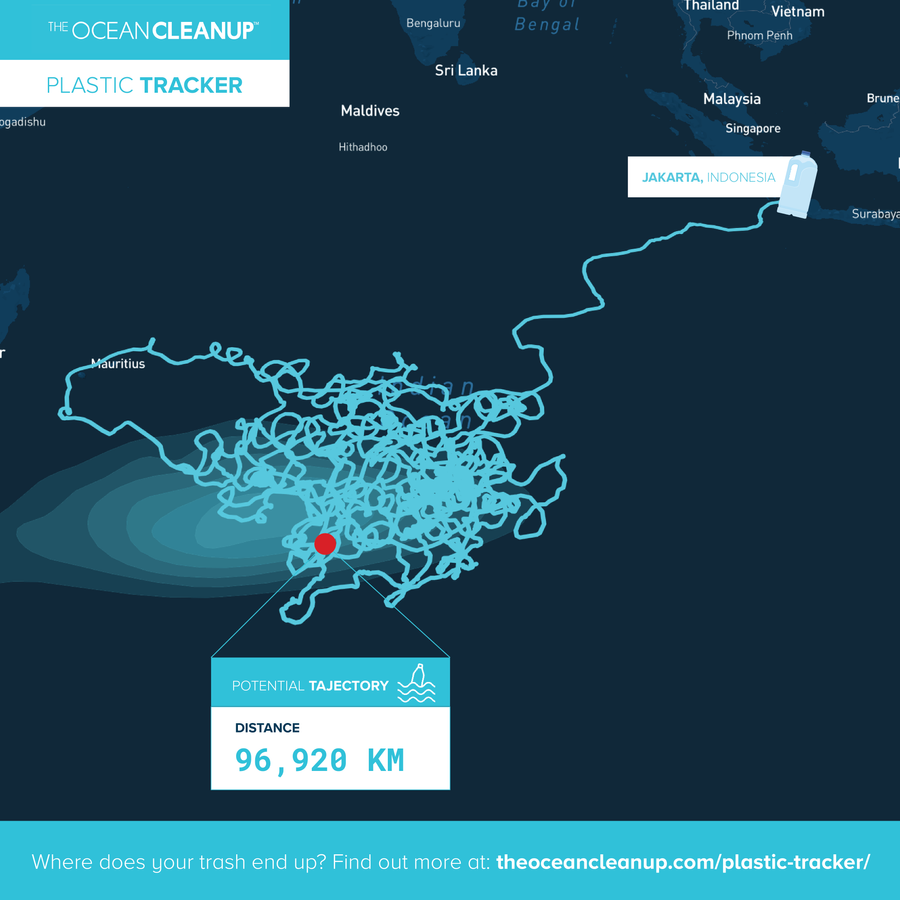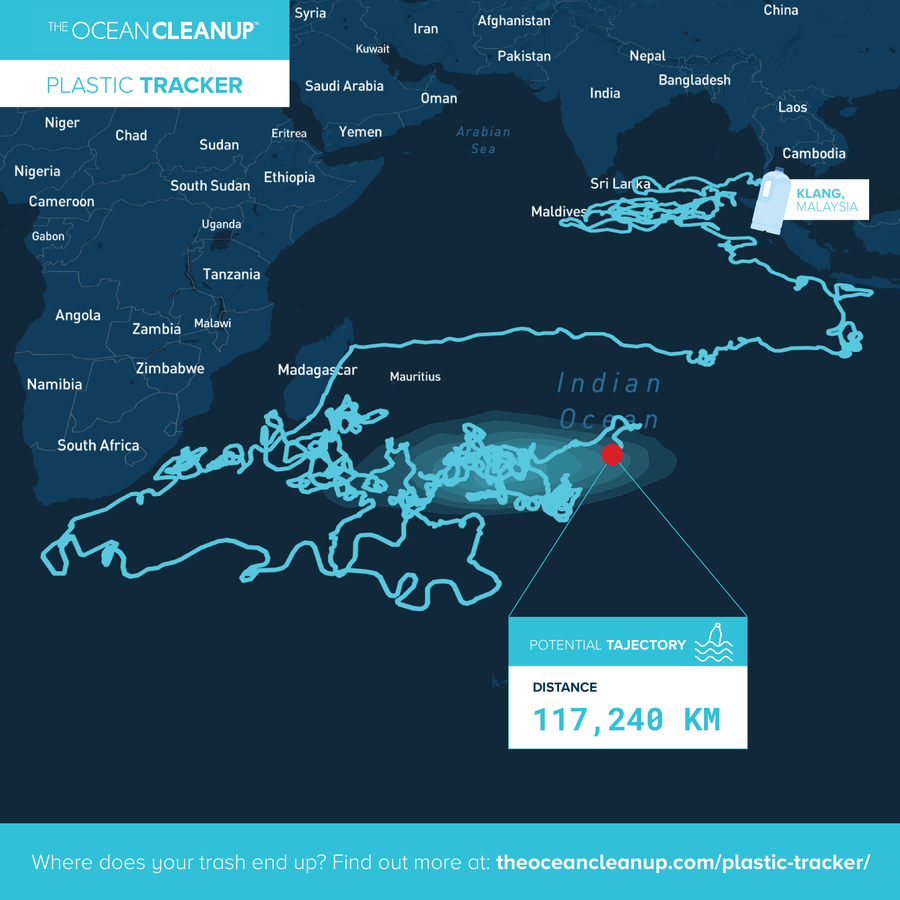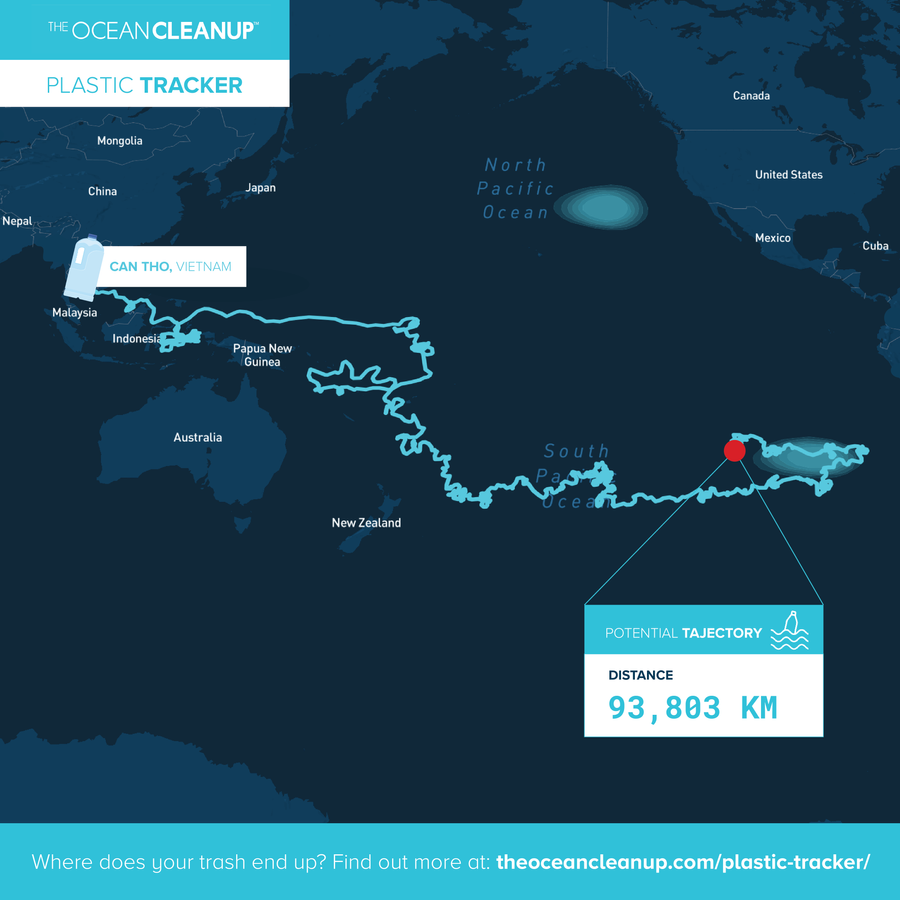Where Does My Plastic End Up in the Ocean?
Back to updatesThe global plastic pollution crisis is complicated and at The Ocean Cleanup we seek to understand it as much as we can to have an impact on it. And, since the problem affects everyone, we believe this knowledge can and should be extended to the broader public.
If the problem can be better understood by everyone, then it helps people to fully grasp the severity of the issue and what we can do individually and collectively to solve it.
So we developed a tool that visualizes the trajectory of plastic pollution by the click of a button – the Plastic Tracker, a web application that lets you see how and where a piece of abandoned plastic can end up if improperly discarded on the ground.
WHY THE PLASTIC TRACKER?
Every day at The Ocean Cleanup, we are confronted by the impact of plastic pollution. We see plastic in the real world or in our virtual models. Thanks to our research teams, we have developed a more profound understanding of the problem. And this is what drives us to roll up our sleeves and develop these solutions to rid the world’s oceans of plastic.
It also serves as a reminder to be careful of our own actions because we know the consequences if we are not. In the Computational Modeling team, we see millions of virtual plastic particles leave the continents and accumulate in the garbage patches or on beaches. So, when we see trash on the ground, we can make educated guesses about where it will end up and then intercept a potential fate in the ocean by simply disposing of it in a nearby bin.
WHAT THE PLASTIC TRACKER SHOWS
The Ocean Cleanup Plastic Tracker is an attempt to convey this awareness of the problem for everyone. It is an easy-to-use application to observe the fate of buoyant plastic in the next 20 years. Pick a place, press enter, and see where a piece of abandoned plastic in this location could end up in the oceans. Follow it as it travels inland towards the shore and the open ocean. You will also get a probability of that plastic piece ending up in waterways, depending on where it was released.
SO HOW DOES IT WORK?
Using our dispersion models, we can compute and predict plastic trajectories in the ocean, and using data from our latest river model, we can calculate the probability of it reaching the ocean.
As is the case with every model, the Plastic Tracker does not show what will happen with 100% certainty. It has its limits. If you want to know more about them, we encourage you to check out the description in the web application and on this specific FAQ page.
For example, the Plastic Tracker does not accurately show what happens with non-buoyant plastic. But whether a plastic sinks quickly at the bottom of a river or reaches the garbage patches – it is still polluting.
HOW CAN YOU HELP?
Even if a problem is out of sight, it should not be out of mind. The Plastic Tracker can help us better understand plastic pollution and visualize it for ourselves in an interactive way. But it is also a call to action, a reminder that by simply picking up trash (safely) when you see it, you can contribute to the fight against pollution and help us in our mission to rid the oceans of plastic.






